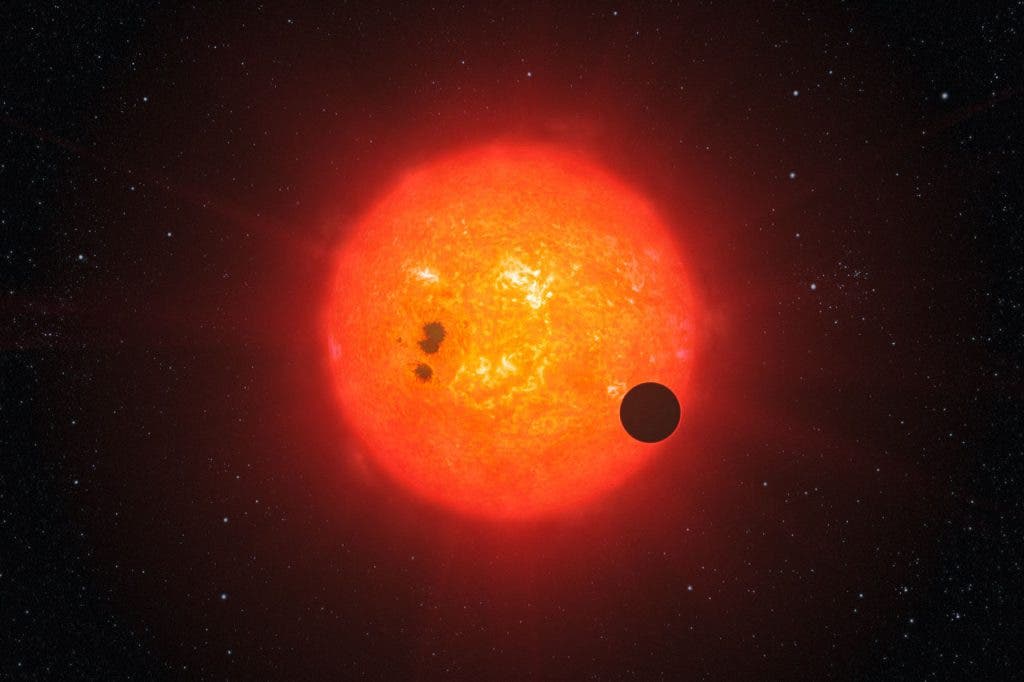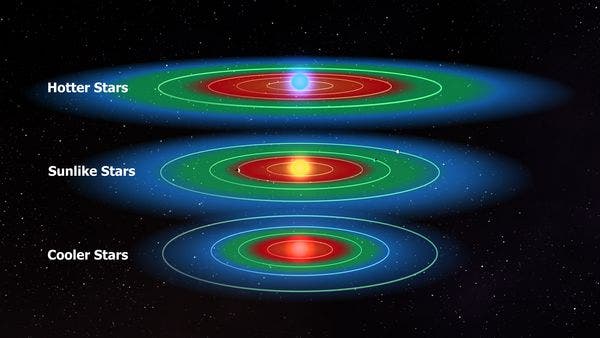According to Danish and Australian researchers who used an improved version of a 250-year old theory, there are billions of the stars in the Milky Way located in the “habitable zone”, where liquid water might exist, and with it, life as we know it.
An old law, revisited

Using the Kepler telescope, astronomers have discovered over a thousand exoplanets in our galaxy. Most of the planetary systems discovered have 2-6 planets, but because Kepler is only suitable for discovering planets near their star, many others might lie undiscovered. When you’re working on scales this big, it mostly becomes a matter of statistics, so researchers from the Australian National University and the Niels Bohr Institute in Copenhagen wanted to calculate the probability for the number of stars in the Milky Way that might have planets in the habitable zone, using what Kepler found as a sample size.
“The motivation was the large sample of multiplanet systems with the Kepler mission (there are hundreds of multiplanet systems) and we wanted to do some statistics with them. Since previous research had indicated that the TB-relation may hold to some degree for some exoplanet systems, we decided to use it for planet predictions,” lead author Steffen Kjær Jacobsen told ZME Science in an email.
According to their calculations, the number of potentially habitable planets is much larger than previously believed, ranging in the billions.
In order to reach this conclusion, they used a newer and improved version of a 250-year-old method called the Titius-Bode law. The Titius-Bode law correctly predicted the orbits of Ceres and Uranus in 1770, much before they were actually discovered, but it actually failed to predict Neptune’s orbit. The law states that there is a certain ratio between the orbital periods of planets in a solar system, so the ratio between the orbital period of the 1st and 2nd planet is more or less the same as the ratio between the 2nd and the 3rd, and so on. But the original law was obviously flawed, so they had to tweak it to work.
“In the new research we are using a generalised version (formulated back in 1965) of the TB-law. This generalized version is more consistent in its application to other systems. There is a small difference in the position of the innermost planets between this generalized version and the first TB relation formulated in the late 1700s. Most importantly, the TB-relation is an empirical law based on observation, so there is no absolute way to derive it. Therefore you will sometimes see people using slightly different versions of it. But, they all predict logarithmic spacings between the planets in a system, which can be used to predict ‘missing’ planets in this planet-position pattern.”
Therefore, if you knew the orbit of an outer and an inner planet, you could potentially calculate the orbit of intermediary planets and see where they lie and if they fit the theory. Empirically, you could determine where other plants “have to be”, according to the T-B law.

“We decided to use this method to calculate the potential planetary positions in 151 planetary systems, where the Kepler satellite had found between 3 and 6 planets. In 124 of the planetary systems, the Titius-Bode law fit with the position of the planets. Using T-B’s law we tried to predict where there could be more planets further out in the planetary systems. But we only made calculations for planets where there is a good chance that you can see them with the Kepler satellite,” explains Jacobsen, PhD student in the research group Astrophysics and Planetary Science at the Niels Bohr Institute at the University of Copenhagen.
In the rest 27 out of the 151 planets, the observations didn’t actually agree with the T-B law, so they tried to include more planets, like pieces in a jigsaw puzzle, to see if they could make it fit. They tried to find a pattern and “add” the missing planets to see if this could explain the matter. With this method, they actually predicted a total of 228 new planets; if further observations would actually confirm the existence of these planets, it would not only confirm their idea, but might have huge implications for the discovery of new planets.
“We then made a priority list with 77 planets in 40 planetary systems to focus on because they have a high probability of making a transit, so you can see them with Kepler. We have encouraged other researchers to look for these. If they are found, it is an indication that the theory stands up,” explains Steffen Kjær Jacobsen.
There is still some controversy to this method; as Jacobsen admits, most astronomers wouldn’t rely on this type of results but so far, the theory still stands.
“This is still a pretty controversial subject, whether or not the TB-law can be applied to planetary systems, and my team is probably in the minority of people who believe that it has some merit – that is, there is tendency for systems to adhere to the TB-law to a greater or lesser extent. But we do not expect that all systems will obey TB’s law. Among other things, it depends on the formation history of the system. 124 of the systems adhered better to the generalised TB-relation than our own solar system (this was our criteria for whether the system fitted the TB-relation or not).”
Habitable Planets

In order for planets to be even considered habitable, they need to be able to host liquid water – this means that they have to not be close enough to their star that everything is scorched, but not far away that everything is frozen. The planet has to be in the perfect sweet spot – the so-called Goldilocks area. But it should be kept in mind that even if the planet is in the Goldilocks area, it doesn’t mean that it does have water, but only that it might have water – there are other factors worth considering, such as the existence of the atmosphere. Still, being in the habitable area is the first step.
The researchers wanted to see how many planets might be in that area, statistically. They found that in the 151 studied planetary systems, there were on average 1-3 planets in the habitable zone for each planetary system. While 151 is a very small sample size considering the size of the galaxy, it’s as good a starting point as any – and if the numbers stand up for the rest of the galaxy, then the Milky Way likely hosts billions of potentially habitable planets – yikes!


